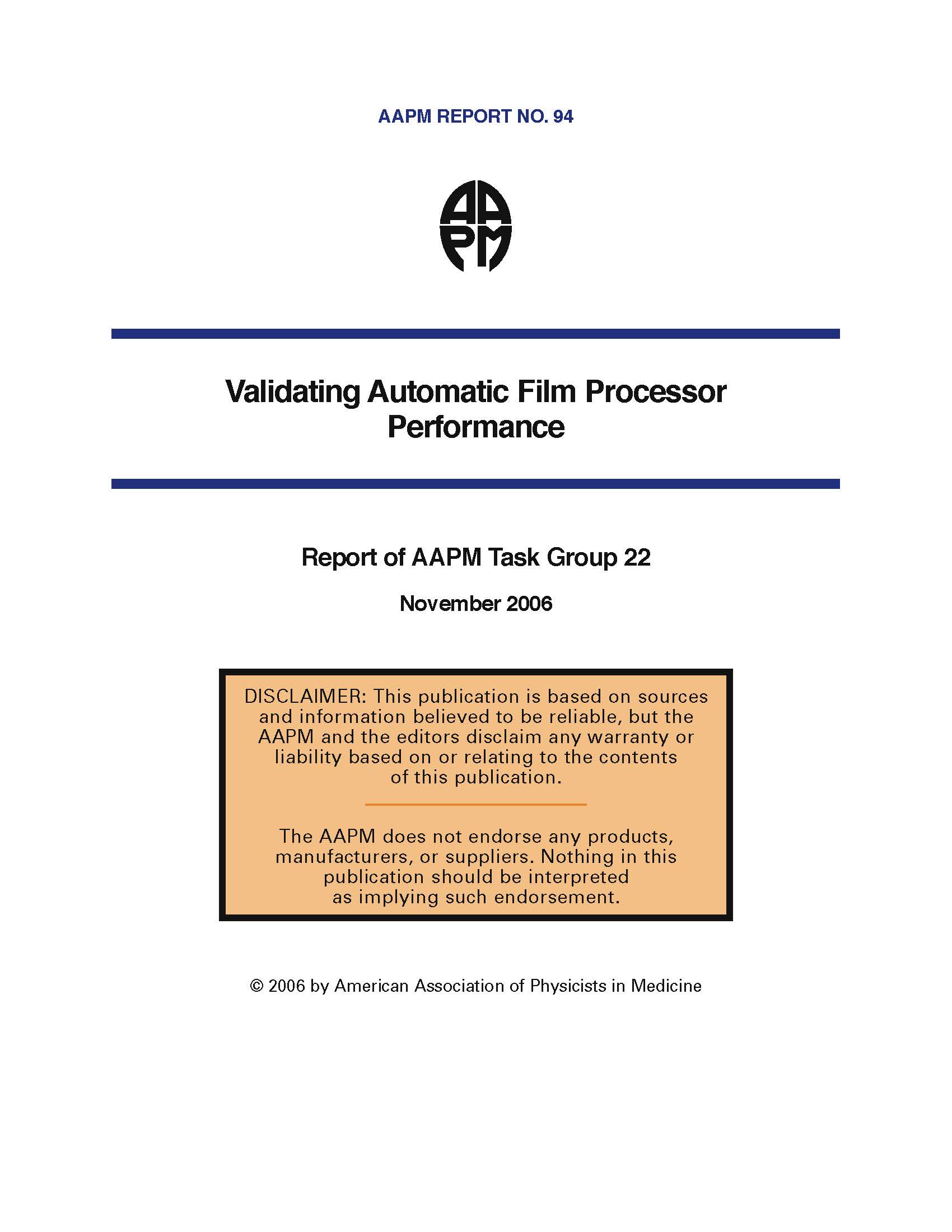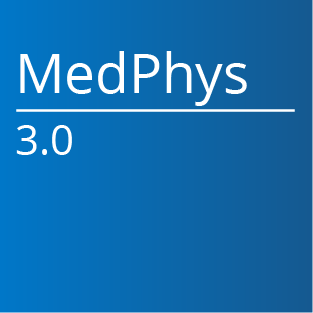
|
Report No. 094 - Validating Automatic Film Processor Performance (2006) Category: Reports of automatic film processors eliminated problems historically associated with manual processing such as development of film by sight, where the development time was dependent on the human observer and was very subjective. Automatic processors improved the consistency of film development by providing constant film development time and maintaining a constant developer temperature. In spite of these technological advancements, automatic film processing continues to be considered one of the most variable components of the imaging chain for a variety of reasons. Over the years, professional societies, industry, and government have addressed these concerns and expended considerable effort developing and refining quality control (QC) tests for film processing in radiology.1,2,3,4,5,6,7 Task Group 22 (TG22) of the American Association of Physicists in Medicine (AAPM) does not feel there is a need to address, once again, the general area of quality control. The members of TG22 agreed, however, that there continues to be a critical need for more specific guidance on how to validate the proper operation of automatic film processors. The members of TG22 represent academia, industry, government, and practicing medical physicists who deal routinely with both large and small facilities. Although many large diagnostic imaging departments are transitioning to entirely digital environments, smaller offices, particularly those owned and operated by non-radiologists, con- tinue to rely on screen-film image receptors and conventional film processing. As recently as October 1, 2004, only 5% of all mammography units in the United States were digital.8 Film processing for the foreseeable future will continue to have a significant impact on the quality of film-based imaging. Even with the inevitable shift toward digital imaging, there are many med- ical facilities in the United States (such as small non-institutional facilities) and the rest of the world, especially developing countries, where film-based imaging will continue to be used for the foreseeable future. Most processor QC programs assume that the processor has been optimized to provide the maximum film performance. However, most film manufacturers typically establish the film performance characteristics only for their product, specifying technical information only for their processors and chemical solutions (starter, developer, fixer). There is little practical guid- ance, when non-specified processors and chemical solutions are used, to help facility personnel optimize the processing of their film at their site before a QC program is established. Consequently, many facilities rely on processor service personnel to do this; and their knowledge, training, and experience in image quality may vary considerably. Processor optimization is also complex due to the availability of multiple combinations of film types, automatic film processors, chemical solutions, and recommended developer temperatures.9 This is further complicated by film and chemical solution manufacturers’ recommenda- tions and claims of equivalency, i.e., an independent chemical solution manufacturer may state that its chemical solutions are equivalent to the film manufacturer’s chemical solution specifica- tions, or that a specified film when processed with its chemical solution will result in equivalent film optical densities. Many facilities “mix and match” film, processor, and chemical solutions from different manufacturers in an attempt to save money, without understanding the impact this may have on image quality. Even if a processor has been set up initially in accordance with the film manufacturer’s recommendations, there are many reasons why the processor may deviate over time. The facility may not have a QC program in place, the facility may have an inadequate QC program, the operator may not be a qualified technologist, or may not be sufficiently knowledgeable to iden- tify and differentiate processor problems from x-ray problems. Even large institutional facilities are not exempt from such problems, since many outsource processing services. The qualifica- tions of personnel tasked to identify and to troubleshoot problems vary considerably. This report provides the practicing medical physicist with a realistic, practical protocol for validating automatic film processor performance using specified film, light sensitometers, and densitometers. For purposes of this report, validation is defined as meeting the film manufacturer’s film densities. This will be done by establishing and comparing film densities from films processed both in a reference (benchmark) processor and in the site processor. In certain situations it may be extremely difficult to establish a reference processor; for those situations an alternative procedure has been provided. https://doi.org/10.37206/95 ISBN: 978-1-888340-66-2 Keywords: Film, Processing Diagnostic Imaging Committee Task Group #22 Orhan H. Suleiman, Gary T. Barnes, Phillip C. Bunch, Priscilla F. Butler, Joel E. Gray, Arthus G. Haus, Marlene H. P. McKetty, Edward Lee Nickoloff, Madeline V. Pina, Robert J. Pizzutiello Jr., S. Jeff Shepard, David C. Spelic, Keith J. Strauss, Stephen R. Szeglin, Robert A. Uzenoff Committee Responsible: Radiography and Fluoroscopy Subcommittee Last Review Date: |
DISCLAIMER



















